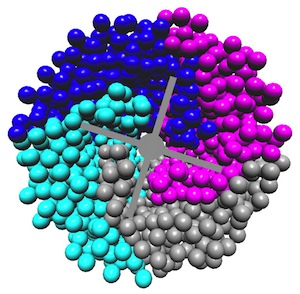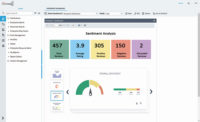
In an effort to better understand the behaviors of concrete made with unusual admixtures, the National Institute of Standards and Technology recently released the results of supercomputer modeling of the physical properties of wet concrete.
The computer modeling, performed at the Argonne Leadership Computing Facility, offers new insights into the behavior of materials suspended in a fluid, which may aid in the development of new, unorthodox concrete formulations.
The results, which were confirmed by physical tests conducted at the University of Strasbourg, show that the relationship between the viscosity and shear in fluid suspensions behaves in a consistent, predictable manner, regardless of the consistency or size of the materials within the fluid of the suspension. With this knowledge in hand, researchers will be able to model with a greater consistency the behavior of unusual concrete formualtions. These findings will aid not only in the creation of evaluation methods for new kinds of concrete but also the design of concrete transportation technology.
Efforts to find new concrete formulas that reduce greenhouse-gas emissions during production or include higher levels of waste products, such as fly ash, are often hampered by a lack of information on how these new mixes will behave during transport and curing. Speaking to NIST Tech Beat, a NIST in-house publication, computer scientist William George described the motivation for this modeling project. "We’d like to be able to design concrete that performs better on the job and doesn’t demand so much energy to manufacture. But what should we make it from? And what can we replace cement with? The answers will affect its properties. So, we realized we needed to learn more about how suspensions work," George said.
George's paper on the results of the computer modeling were submitted to the peer-reviewed Journal of Rheology in early 2014 and published in its November 2014 edition.







Post a comment to this article
Report Abusive Comment